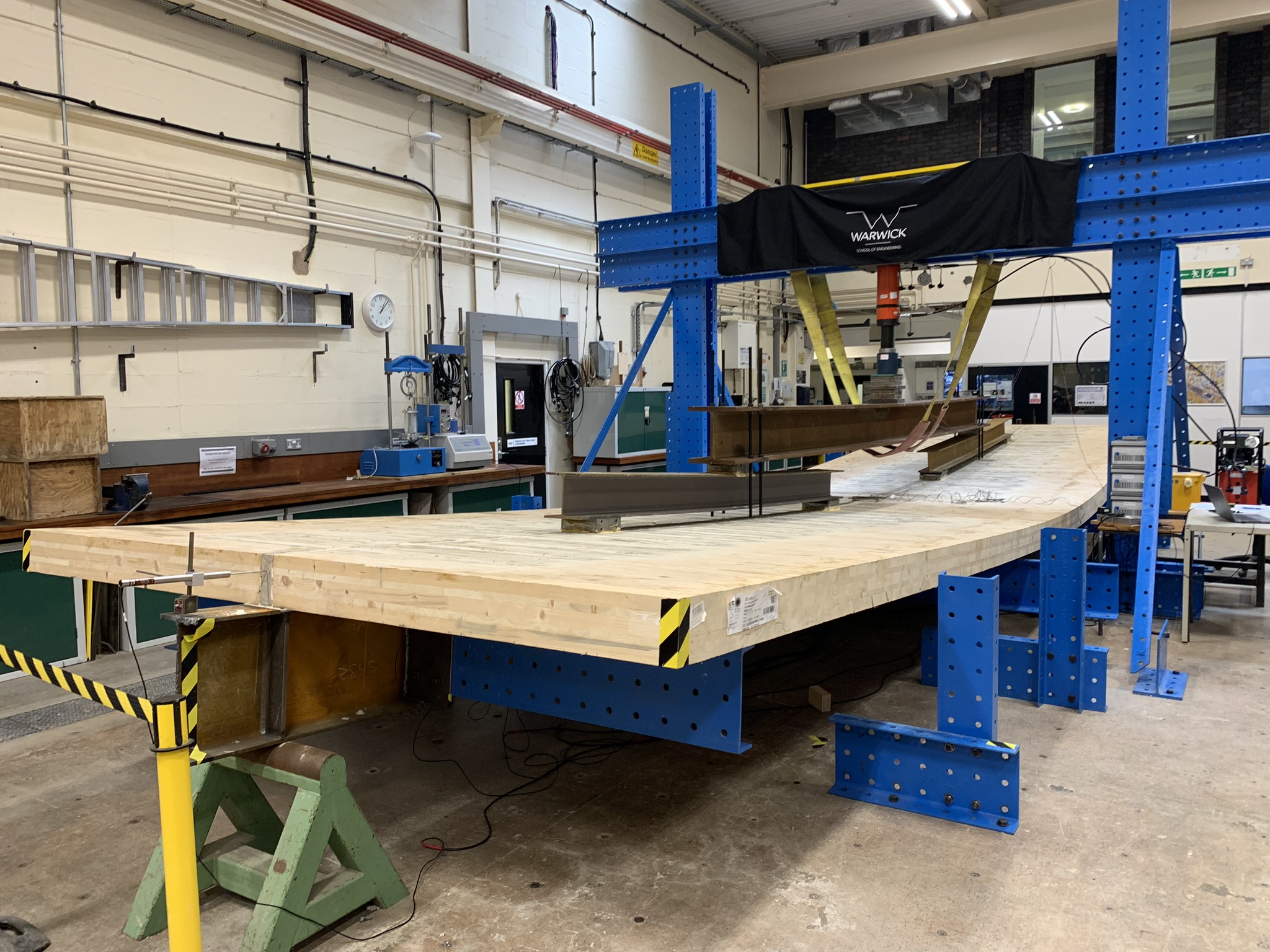School of Engineering News
WSP and Warwick's CLT-Steel Composite Floors Recognised for Innovation at CTBUH Annual 2024 Awards
The School of Engineering is pleased to announce that the CLT-Steel Composite Floors (CSCF), a pioneering project developed in collaboration with WSP and the Forestry Commission, has been honoured with the prestigious Council on Tall Buildings and Urban Habitat (CTBUH) Annual 2024 Award of Excellence for Innovation.
This groundbreaking system, which integrates Cross Laminated Timber (CLT) panels with steel beams, offers a transformative solution to traditional floor systems by enhancing structural efficiency and reducing carbon emissions. The innovation is the result of extensive research and full-scale testing conducted at the University of Warwick, under the leadership of Professor Stephen J. Hicks.
Key benefits of the CLT-Steel Composite Floors include:
· Enhanced Structural Efficiency: Combining the strengths of CLT and steel to improve building performance.
· Codified Design Method: Establishing a standardised approach for calculating shear connector capacity.
· Environmental Impact: Reducing the carbon footprint of construction by utilising sustainable materials.
· Industry Adoption: Designed for ease of use, the system employs existing construction techniques, encouraging widespread acceptance.

Professor Hicks’ expertise, particularly in the development of design rules for shear connectors, has been instrumental in the success of the project. Professor Hicks also serves as the Chair of the European Committee for Standardization Sub-committee 4 (CEN/TC250/SC4), responsible for the Eurocode 4 design standard for composite steel and concrete structures.
“This innovative system is especially suitable for vertical building extensions, enabling the addition of new floors without increasing the overall structural load. It directly aligns with our sustainability objectives and supports broader environmental goals,” said Professor Hicks.
The project has been generously supported by the Woods into Management Forestry Innovation Fund, administered by the Forestry Commission. CLT panels were provided by Hybrid Structures, with steelwork supplied by Severfield UK and ArcelorMittal.
Andrew Woodward, Director and Head of Industry at WSP said “With steel-framed buildings currently dominating the multi-storey office market in the UK, the replacement of the metal deck or precast concrete floor slabs with a CSCF system aims to reduce embodied carbon and increase carbon sequestration within the structure. Additionally, the use of sustainably grown British softwood for CLT production aligns with environmental sustainability goals.
An enhancement of around 40% of the plain steel section is achieved through composite action and the embodied carbon of a CLT/Steel composite floor system has around 60% of the carbon of a traditional steel/composite slab floor and only 40% of the mass. In addition, the CLT panels also sequester over 135% of the total embodied carbon of the floor system.”
To read more from Andrew Woodward and WSP, please click here.
Photo credits: WSP and the University of Warwick
